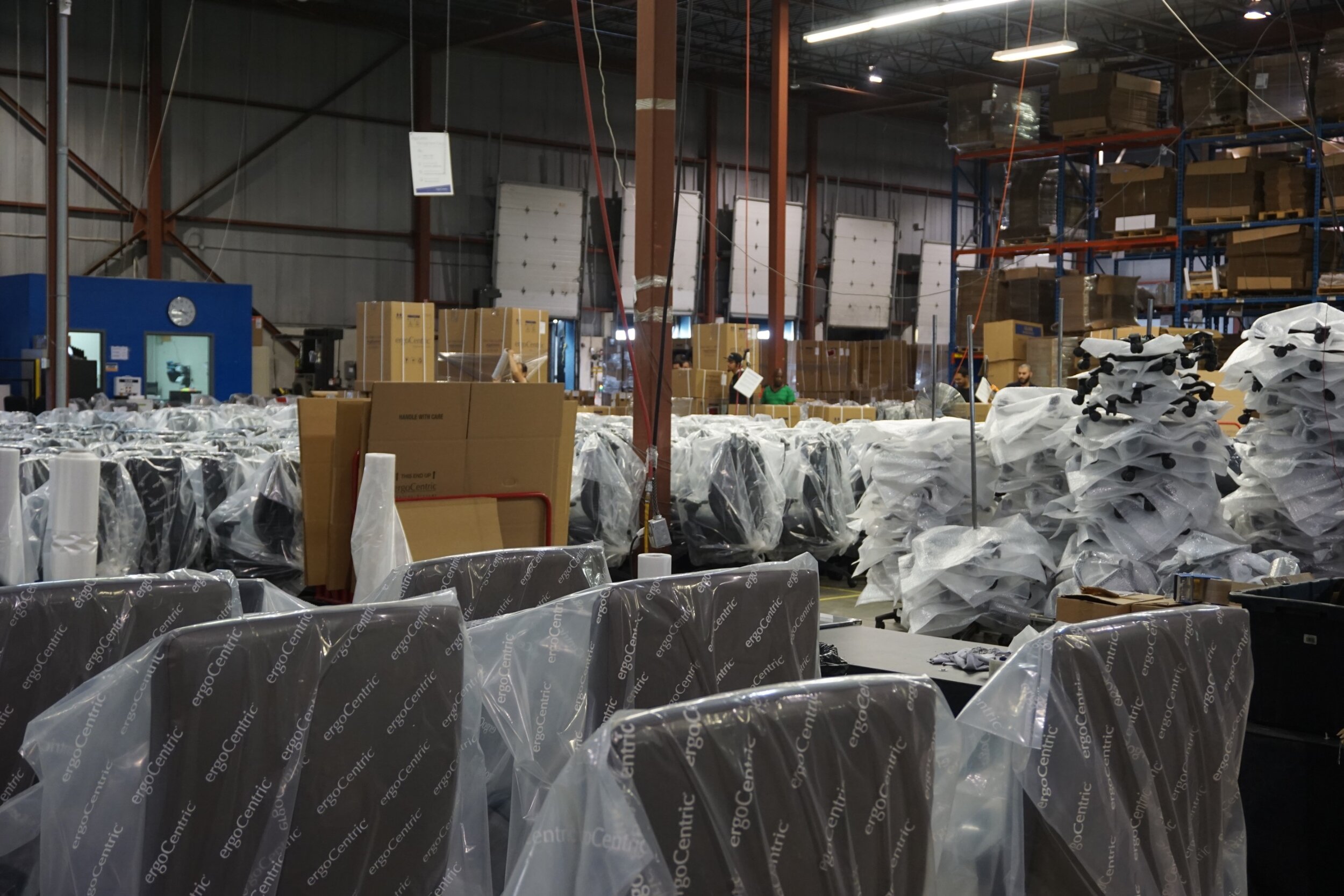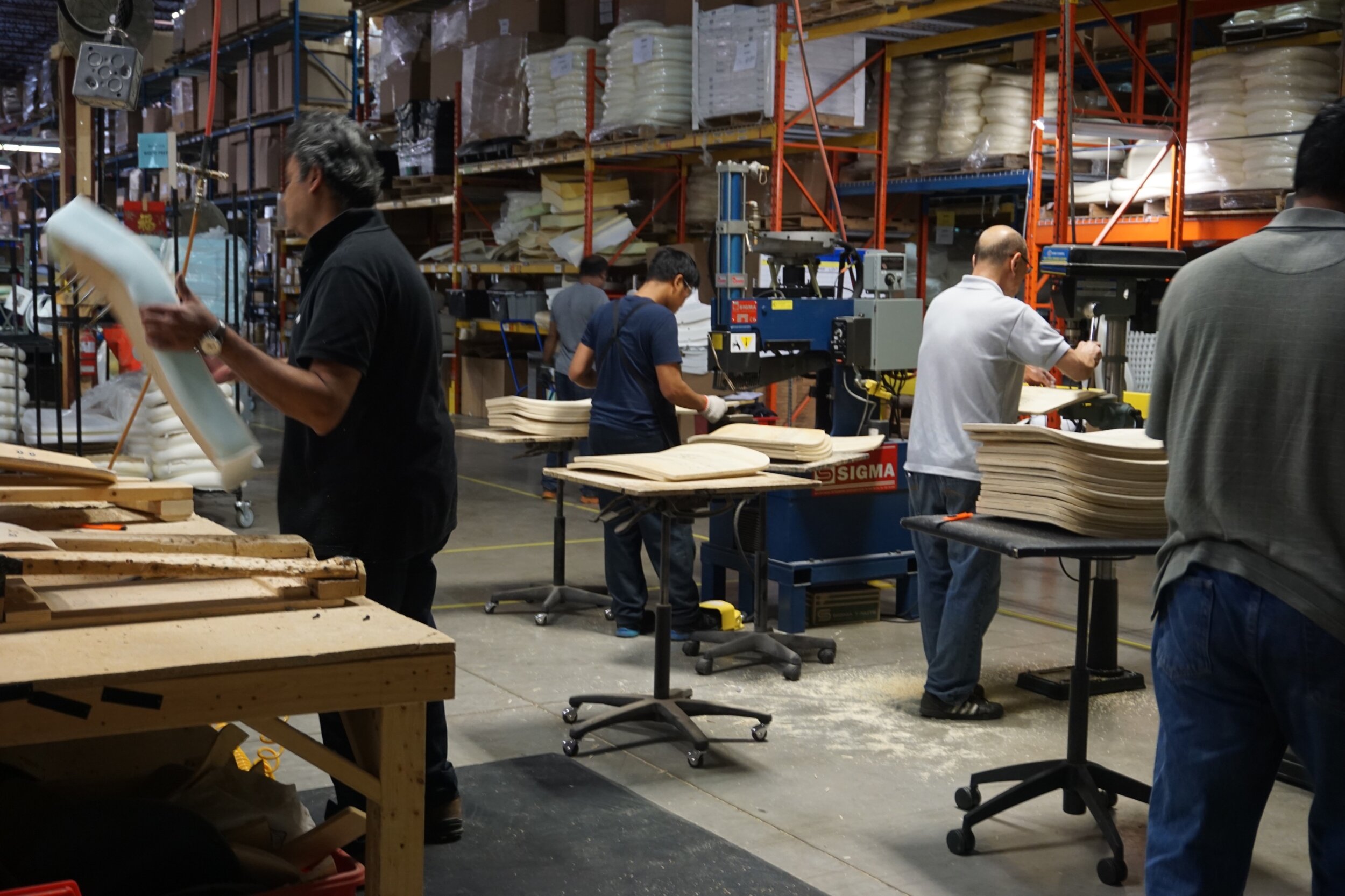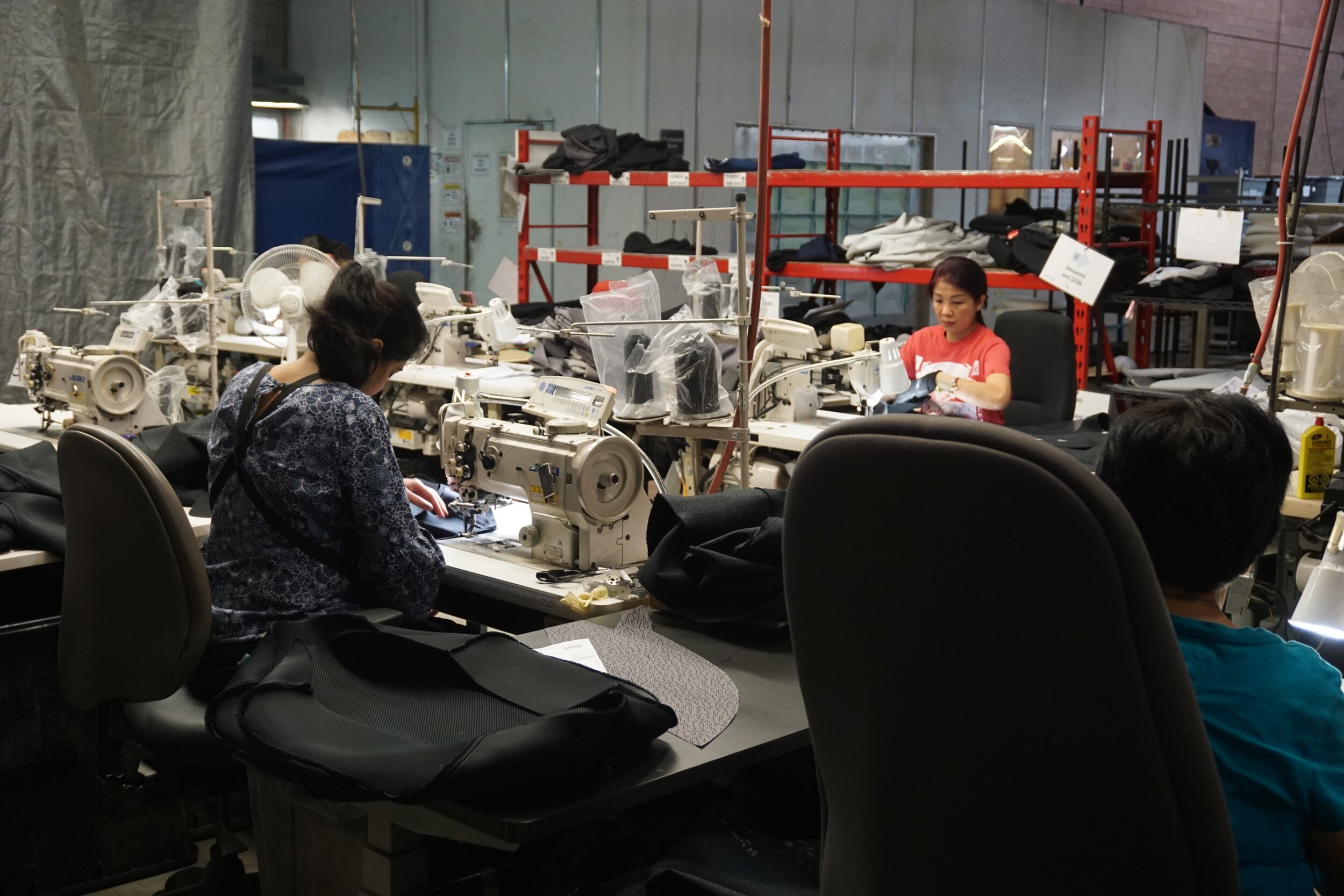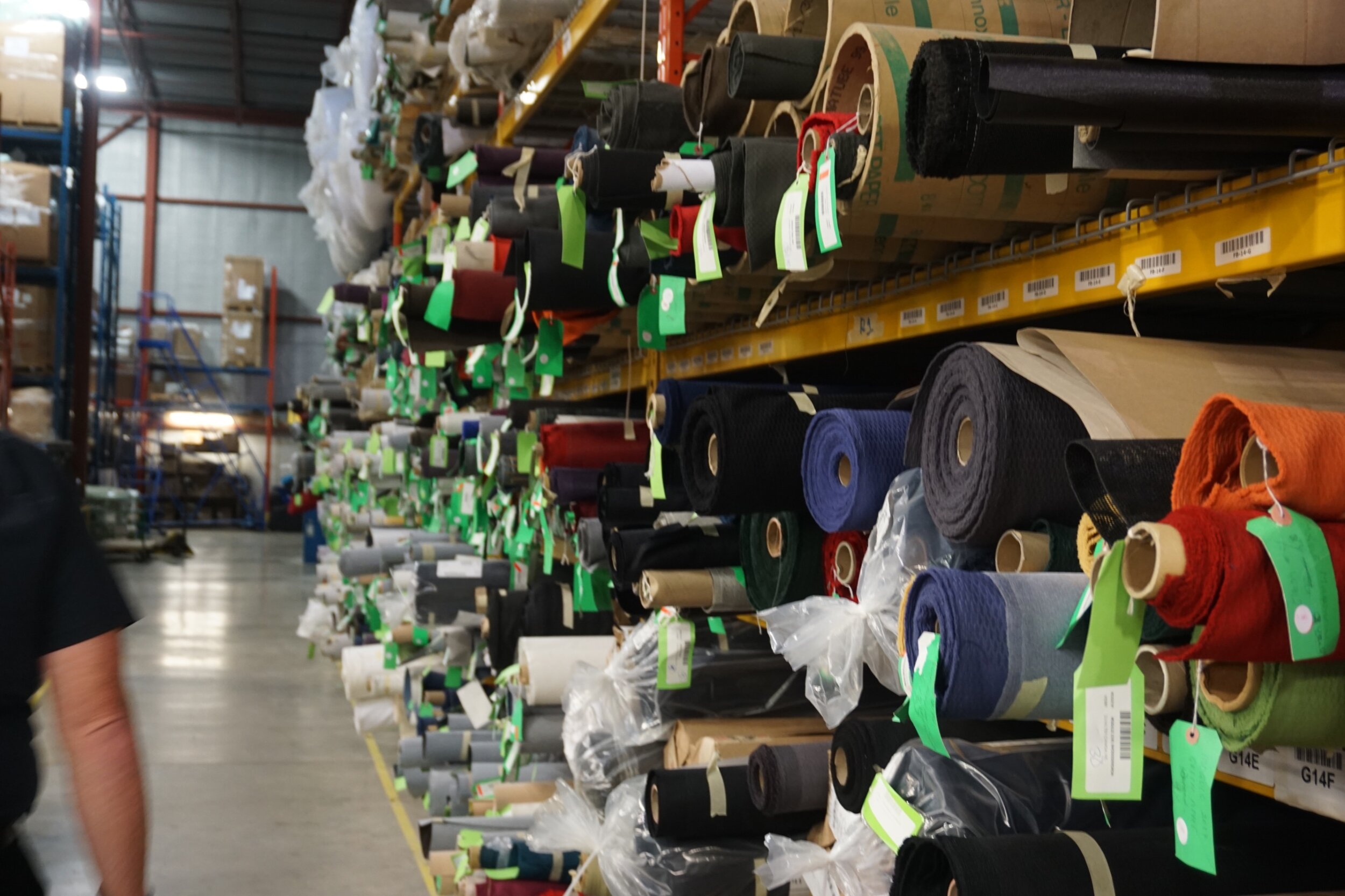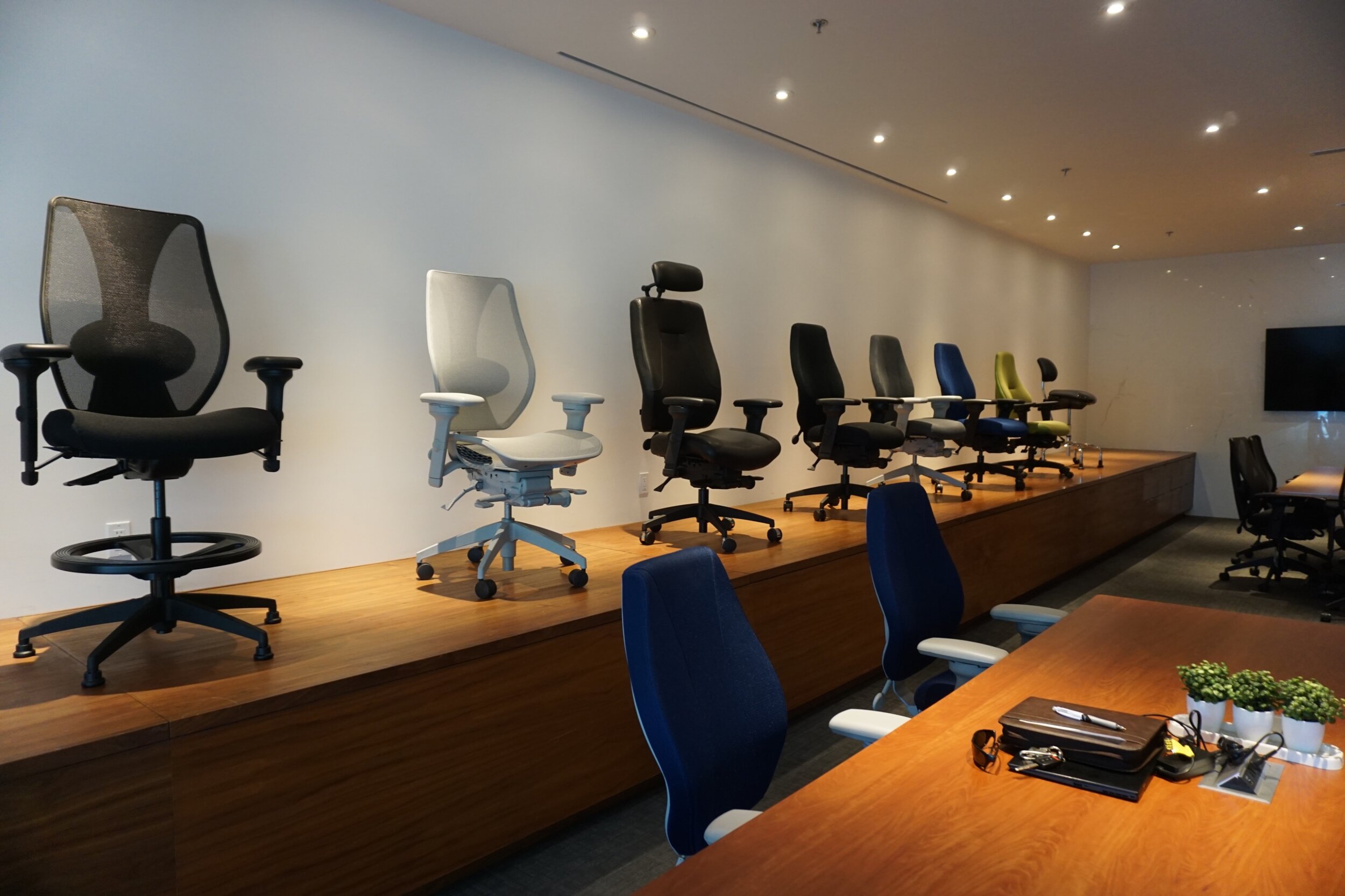A task chair is more than just a piece of furniture. If it's designed properly, workers will be more productive and more comfortable doing work without pain or physical stress. This is the goal of the Canadian company ergoCentric.
Terry Cassaday, ergoCentric's founder and chairman, got his start in ergonomic seating almost 30 years ago. At the time he was a lawyer, but he always wanted to start his own business. His wife is a physiotherapist, and he opened a store selling products physiotherapists recommended, such as back and knee braces.
Cassaday learned that of all of the musculoskeletal injuries his wife dealt with, back pain was the most difficult to treat. He started researching back-related pain and learned back braces can often be harmful to the wearer because they act as a crutch and can weaken the back. Recognizing it was better to sell products that prevented the issues of chronic back pain, Cassaday changed focus and started selling ergonomic chairs. “I was having trouble finding seating solutions that provided adequate support, so I decided to make them myself, and it evolved from there,” he said.
“From the beginning I always considered myself to be in the business of health and wellness. The difference between ergoCentric and our competitors is most people either got into the business because they were an upholsterer or general furniture manufacturer, but not furniture based on the human anatomy and the needs of the human body. That's the fundamental difference: I got into making task chairs specifically to reduce the stresses caused by the seated posture.”
The first chair ergoCentric produced was the Ergo1000, which was made for harsh factory environments, followed by the Ergo 2000 and 3000. Today the focus is on ergonomic office task seating, with 13 work chair series available, all using a modular manufacturing process.
“We started promoting ergoCentric chairs at health and safety trade shows, differentiating us from mainstream seating manufacturers, and I met many ergonomists from across Canada at these shows,” Cassaday said. “They would tell me what they like about our task chairs and what could be improved. Often I would take their advice, and we would make that improvement or option. Our chair lines evolved that way — I always tried to make them better, to fit people for whom there wasn't anything to help.”
A 100% fit
From the beginning, ergoCentric's task chairs were designed as part of a modular system. Any task chair can have any mechanism, seat, arms or back, which makes for a non-obsolescence policy.
“When we design new componentry, we make sure that it fits the first chair we made,” Cassaday said. “That way, if something goes wrong, we can fix it easily, in the field, with the most recent component. It's better, it's improved. If you don't do that at some point, you can't service your customer anymore.”
Using a modular manufacturing system, ergoCentric claims it can fit virtually 100% of the population. While it manufactures chairs for little people and has options for bariatric seating, it is also the standard seating provider for some of Canada's largest employers.
“The benefits of modular manufacturing are demonstrated in a chair order we had for TJX's (Canada's TJ Maxx) new office building in Ontario,” said John Gardner, ergoCentric's CEO. “The U.S. corporate headquarters was insisting on Haworth products throughout the facility; however, due to our successful history with TJX employees who required modified seating due to special accommodation requirements, the Canadian office insisted on using ergoCentric task chairs for their new building.”
The order was for 2,200 chairs, of which 2,015 were for the exact same airCentric task chair. For the remaining 185 employees who fell outside the standard, ergoCentric was able to make each and everyone one of TJX's employees comfortable by making modifications to its airCentric chair, such as adding air lumbar or changing the gas lift height or the size of the seat pan they required. “Some organizations don't think it's worth the hassle of making these small modifications, but progressive employers know the benefit of making their employees comfortable,” Cassady said.
Patented property
From very early on, Cassaday recognized the importance of protecting the designs he would create as he identified gaps in the market for the products, and he holds numerous patents and copyrights (20 at current count). His first patent was for protecting the infinite back-height adjustment mechanism.
Adjusting the lumbar support is important to help the user maintain good posture throughout the day, he explained. However, if only the lumbar support can be moved, that added support will be out of sync with the rest of the chair. Instead of only the lumbar support moving, all ergoCentric task chairs come with the patented, back-height adjustment system and can be infinitely adjusted over five inches of movement, allowing for the lumbar to be put precisely where the user needs it.
Last year a study by Atlas Injury Prevention found an employee with a task chair with multiple adjustments adjusted incorrectly had significantly more discomfort than those who had chairs without adjustment. The problem is not a chair with multiple adjustments, but with the adjustments not being made or being made incorrectly.
Cassaday explained the problem is not that chairs shouldn't be adjustable, but that they are not adjusted correctly or used at all. Bell Canada, Canada's largest telecommunications company and long-time customer, standardizes on the airCentric. When it started using ergoCentric as its standard task seating provider, the company identified the need for instructions on the paddles to help users make the correct adjustments. To accommodate for Canada's bilingualism, instructions had to be in both English and French, but both would not fit on the paddles.
“I observed that when you had all the paddles all the same, people would reach underneath the chair, and they would feel the paddles, but they wouldn't know which was which,” Cassaday said. “That's when we came up with the idea of geometric paddles, and we filed a U.S. patent on this. The triangular paddle is always back angle. The square paddle is always the seat height. Circular paddles are always seat angle, the back oval and the seat depth is the diamond. It's really easy to feel the difference between the diamond, circle, square and triangle shapes. It also allows the visually impaired to more easily adjust their seating.”
In addition to the geometric shaped paddles, ergoCentric also added an icon plate to the side of the seat cushion that is easily viewed while sitting, showing what the different shaped paddles do. The plate includes a URL to a short video explaining how to correctly adjust the chair, reinforcing the company's desire to educate users.
30 years experience with one chair
ErgoCentric's newest chair, the tCentirc Hybrid, is its most versatile. It takes the company's 30 years of experience and puts it into a single chair series. The chair is available in three versions to fit the size and preferences of the user: full mesh for those who like the breathability of mesh, an upholstered seat with a mesh back or an upholstered seat and back.
“With the tCentric Hybrid we feel we've designed a chair that speaks to all corporate stakeholders,” Cassaday said. “It gives the ergonomist everything they need to fit employees while giving facilities management and corporate design a great looking chair they can be proud to deploy throughout the facility.”
To fit an employee correctly, the mesh seat is available in three standard sizes, and the foam upholstered seat is available in six sizes. Because the same model of chair can be specified for just about any employee, regardless of their size or materials preference, the look throughout the workplace will be uniform. More importantly, an employee requiring special accommodations will not stand out, avoiding embarrassment or reluctance to be fitted to a chair that will reduce pain or fatigue.
Sites are set
ErgoCentric has experienced triple digit sales growth in the last five years with the majority of sales occurring in the Canadian market and smaller percentages attributed to the U.S. and France. From its two manufacturing plants in Mississauga, Ontario, the company guarantees a maximum 10 business day lead to build task seating to a customer's specification. It employs both a direct-to-consumer and a dealer network sales strategy, shipping all chairs fully-assembled, which saves time and labor costs and makes drop-shipping easy.
"In Canada, we're very entrenched and have been for some time,” said Ken Hammond, territory sales manager. “In the U.S., we have four regional managers, and that's where we see a huge opportunity for growth, with the tCentric Hybrid leading the way.”
When asked about why ergoCentric has experienced the success that it has, Cassaday said, “It's far too easy for a company to market its seating as ergonomic. By modifying components to the individual user requirement, ergoCentric can legitimately make this claim. Our customers hold us to high standards and characteristics unique to our country, such as bilingualism, the duty to accommodate, a culture that embraces diversity and standards such as the Canadian Standards Association standard for office ergonomics ... forces us to do better.”
It's with these standards in mind that ergoCentric eyes the U.S. market. As large organizations grapple with the intersection of employee safety, workforce satisfaction and workplace diversity, ergoCentric appears at the tipping point of major success.



